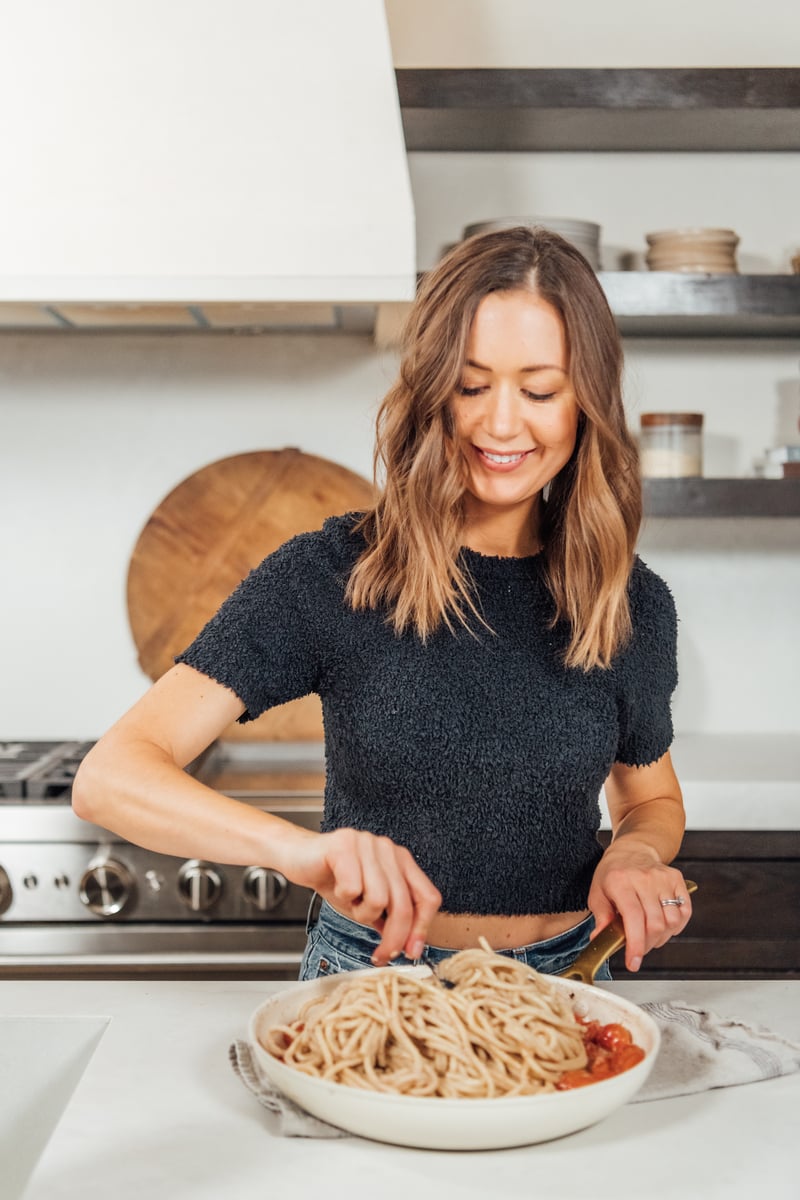Editor’s note: Ever since Rebecca Atwood‘s “Living With Pattern” landed on our doorstep, it feels like my design sensibilities have done a complete 180. I’ve had varying versions of mostly white bedding for years and have always loved it, but flipping through the vibrant, pattern-filled pages of this book has me craving color and texture in a major way. If you’re not used to mixing patterns, making such a drastic change can feel a bit overwhelming, so we have Rebecca herself joining us today to guide us through the transition. Follow her 8 tips for making your bed anything but basic, and be sure to keep an eye out for her gorgeous book hitting shelves next week!
From Rebecca: Growing up, I remember the simple pleasure of changing the bedding with the weather. My mom would put on flannel sheets in the winter and pile on the blankets, since half of our old Cape home didn’t have heat. In the summer we’d open all the windows and use crisp, breathable sheets and thin blankets. I remember when I got my own room my mom and I went shopping for bedding. We found reversible Laura Ashley bedding on sale—one side had a floral print with a light ground and the other was the same print but with a dark green ground. We used the sheets to make matching curtains and even painted the floor to match the marine-green hue. It was such a special moment, and I still remember that bedding so well because it was something we picked out especially for me.
*photography by Emily Johnston

Define your retreat.
The most important element of the bedroom should be a place to recharge and rest. Of course, this means different things for different people, but pattern can help you create that mood. Think about the places and things that make you feel recharged. Dark and cozy or light and airy? A peaceful and serene space may be what lets you unwind, or conversely, a space filled with visual inspiration could provide you comfort. Investigate this on a personal level and make this place your retreat.

Stock your linen closet.
When fully stocked, it’s easy to create many looks that take you through all moods and seasons. Let’s be honest: sometimes the matching pillowcases aren’t clean, or you need to swap out your top sheet, or you spill your morning coffee on the duvet. If all your linens work together, your job will be much easier. You’ll also find that your linens will last longer if you have more to rotate, and your bed will show an interesting mix.

Break it up.
Breaking up bedding sets and mixing your patterns is one of the easiest ways to create a custom look. Since the patterns are typically such a small scale, they read as texture from a distance.

Upgrade your white
White is the default when you want that peaceful serene vibe, but there are more options to consider. Add pattern in a quieter way. Keep the color palette soft and tonal, with a mix of white, taupe, sand and tones verging on blush.
And texture is key. Try mixing a sheeting fabric, like percale or even flannel, with a hand-knit pillow, fuzzy throw, or other textures such as eyelet, chunky woven linen, or natural canvas. It helps to have one piece that has a few tonal whites within it as well.

Know your neutrals.
If you already own a set of white sheets, make sure that any patterns you add are white based, not ivory. Off white pieces can look dirty or old next to optic white.
Mixing white and ivory or cream on the bed is tricky, but it can be done. Here, the ground on the sheets with the small-scale print is very similar to the white in the quilt. I styled graphic pillowcases and a quilt in tan and cream, which works because the pattern is all over and each color is equally balances, allowing the print to read more like a solid pale tan.

Where to begin.
If you’re working pattern into your bed for the first time, start with your sheets. Stripes or ditsy prints are great additions to any white bed. When making your bed, the printed side of the flat sheet is placed pattern side down; when you fold over the top of the sheet, there’s a peek of pattern. Since most of the pattern is under a coverlet or duvet, this is less overwhelming.
Even before that, just use the pillowcases to live with the pattern for a little while before committing to a full set.

Layer for the seasons.
As the seasons and perhaps your moods change, you’ll want to later things differently. In the warmer months, you can probably get away with just sheets, a coverlet, and a lightweight throw. Colder months are a perfect time to really go for it and layer all your pieces. Figure out if you prefer having a blanket on top of your sheets and between your duvet, or just layering a quilt on top of it all for extra warmth; you an keep it folded at the bottom of the bed during the day.

Embrace the imperfections.
My personal feeling is that the bed should always be slightly unmade, not too perfect. Embrace the imperfections and wrinkles; otherwise you’ll always be dissatisfied (unless you really love spending your mornings perfecting your bed-making skills).





